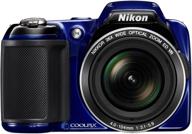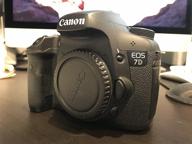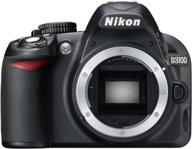
Review on 📷 Fujifilm X100F 24.3 Megapixel APS-C Digital Camera in Silver Shade by Michael Robinson

The camera that made digital photography interesting again
If you like film photography, you'll love the Fujifilm X100F. If you like point-and-shoot convenience, you'll love the Fujifilm X100F. If you like high image quality, good colors, nice bokeh and a slightly long focal length, you will love the Fujifilm X100F. I'm a young man, but I started my photography career with film cameras. Like all Fuji X-series, the X100F is equipped with three things that I personally appreciate very much: 1. Optical viewfinder. As a bonus, you can use the pop-up mini EVF, which allows you to manually focus the lens with a degree of certainty when using OVF. Image lines, exposure information, remaining frames, focus bars and even a histogram can also be projected in OVF, giving you all the information you need to take well-exposed photos and take full advantage of the 24MP X-Trans sensor. Of course, you can switch to the full-featured EVF or use the rear LCD screen if you want to shoot that way.2. Discreet exposure control in the style of old film cameras. The lens features a locking third-stop aperture ring and a combined shutter/ISO dial on the top plate. All three controls have an auto setting, allowing you to engage shutter priority, aperture priority, fully manual or fully auto exposure modes without having to fiddle with the PASM wheel. Thank God. In addition, you can create multiple custom Auto ISO profiles by specifying the minimum and maximum acceptable ISO values and the minimum acceptable shutter speed.3. Sturdy metal construction that actually feels like metal. So many digital cameras have a plastic body, feel cheap and playful in your hand. Even flagship DSLRs with their metal frames don't feel "right" to me; I'm much more comfortable with the solid construction of my Nikomat FTN or Konica IIIa. This is how the solid metal frame of the X100F simply feels comfortable. This is a solid camera that feels more like a piece of high-end precision engineering than a mass-produced item. The ability to manually control the entire exposure triangle without having to dig through menus or endlessly rotate nondescript images. The black multi-function wheels are what drew me to Fujifilm in the first place, but what's holding me back is the fact that you don't have to sacrifice comfort or image quality to get these controls. The X100F is lightweight and compact, easily fitting in a jacket pocket but never feeling cramped. As an added bonus, the X100F uses a surprisingly quiet blade shutter with shutter speeds up to 1/4000th and, unlike traditional focal plane shutters, can flash sync across the entire shutter speed range. This mechanical shutter is complemented by an optional electronic shutter with speeds up to 1/32000, but like many electronic shutters, it has some rolling shutter issues and can't sync the flash. Focusing is by wire, which is the only major complaint I have about this camera. The Wi-Fi capability is great if you like posting on social media, and the camera remote app (in my experience) works really well for street photography, allowing you to launch the camera without touching it. The icing on the cake is how good the camera JPGs look without any modifications; Just apply the film simulation and you're good to go. If you shoot in RAW, you can even apply these film simulations afterwards and create JPG files in-camera with the easy-to-use but powerful built-in RAW processor. And of course the camera looks damn good.
- Beautiful thing
- I can't remember, but there was something
New products
Comments (0)
Top products in 📷 Digital Cameras

Nikon COOLPIX L810 Цифровая камера: 16,1 МП, 26-кратное увеличение, объектив NIKKOR ED Glass, 3-дюймовый ЖК-дисплей (синий)

95 Review

Прекращенная Canon EOS 7D Цифровая зеркальная камера 📷 Только корпус с датчиком CMOS 18 МП.

88 Review

Цифровая зеркальная камера Nikon D3100 с автофокусным объективом-зумом Nikkor (не производится)

109 Review

Корпус зеркального фотоаппарата Nikon D3100 (Комплектная коробка) - без объектива, международная версия без гарантии

298 Review






